Photographs: Kyodo/Reuters
More than 1,700 people were feared dead in the massive tsunami triggered by Japan's most powerful earthquake which wrought devastation in northeast coastal Japan forcing the government to declare emergency at two nuclear plants after their cooling systems failed.
Kyodo new agency reported that 217 bodies had been recovered.
The cooling systems in two key nuclear power plants at Fukushima plant were disabled and Japan's nuclear safety agency has said that the plant will release slightly radioactive vapour from the unit to lower the pressure in an effort to protect the reactor from a possible meltdown. There has been no radiation leak.
Click on NEXT to see more PHOTOS...
Bruised Japan staggers to its feet
Image: Passengers sleep at a lobby as they wait for their transportation at Haneda Airport in TokyoPhotographs: Jo Yong-Hak/Reuters
Prime Minister Naoto Kan ordered evacuation of over 45,000 residents living within 10-kilometres radius of the nuclear plants.
A strong 6.7-magnitude earthquake hit the country's mountainous Niigata prefecture northwest of Tokyo early Saturday morning, causing landslides and avalanches and destroying some wooden houses.
Bruised Japan staggers to its feet
Image: Houses are swept by water following a tsunami and earthquake in Natori City in northeastern JapanPhotographs: Kyodo/Reuters
On Friday, the gushing waters following the 8.9-magnitude quake, the most powerful since the 1923 tremor (7.9 on Richter scale) in Great Kanto area in Tokyo that had killed more than 140,000 people, swept houses, overturned ships, vehicles and set ablaze several buildings, including a petrochemical plant.
Most of the bodies were recovered from Sendai. Japan's military mobilised thousands of troops, 300 planes and 40 ships for the relief effort, Kyodo reported.
Bruised Japan staggers to its feet
Image: Cars and airplanes swept by a tsunami are pictured among debris at Sendai AirportPhotographs: Kyodo/Reuters
At least 60 people were killed in Iwate prefecture and other places. A 67-year-old man was killed after being hit by a crumbling wall in Chiba prefecture, while a woman in her 50s died after a portion of a roof of a hall collapsed in Tokyo.
The National Police Agency said 531 people were reported missing and 627 others were injured in the quake and the 33-foot tidal waves in the country's northeast coast.
Bruised Japan staggers to its feet
Image: Sendai Airport is flooded after a tsunami following an earthquake in SendaiPhotographs: Kyodo/Reuters
Television images showed fires raging in several building complexes as also a major petrochemical complex in Sendai. The tsunami also flooded the Sendai airport.
A ship carrying about 100 people was washed away by the huge tidal waves in Japan's northeast coast and its fate was not known, public broadcaster NHK reported, citing Miyagi prefecture police.
Bruised Japan staggers to its feet
Image: Evacuees stand around Shinjuku Central Park in TokyoPhotographs: Kyodo/Reuters
Buildings, even in far away Tokyo, shook vigorously and live footage by NHK showed a wide, muddy stream moving rapidly across a residential area near Natori River in Miyagi, levelling everything in its path.
Bruised Japan staggers to its feet
Image: A whirlpool is seen near Oarai City, Ibaraki Prefecture, northeastern JapanPhotographs: Kyodo/Reuters
The quake struck at 2:46 pm local time (11:16 am IST) and alerts were issued across the Pacific, including areas as far away as South America, US west coast, Canada and Alaska.
Kyodo quoting the fire and disaster management agency said more than 80 fires were reported from Iwate, Miyagi, Akita, Fukushima, Ibaradi, Chiba and Kanagawa prefectures.
Over 600 people, many of them students, were seen stranded atop a school rooftop in Sendai after a fire broke out nearby.
Bruised Japan staggers to its feet
Image: People line up in front of public telephone booths at Shibuya station in TokyoPhotographs: Yomiyuri/Reuters
Japan is at particular risk, sitting in the 'Ring of Fire', an arc of earthquake and volcanic zones stretching around the Pacific where about 90 percent of the world's quakes occur.
More than 80 aftershocks greater than magnitude-5 have been felt since the Japanese rupture, a number that scientists say is normal for a quake this size.

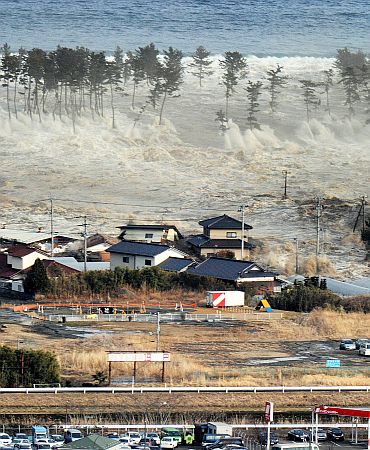
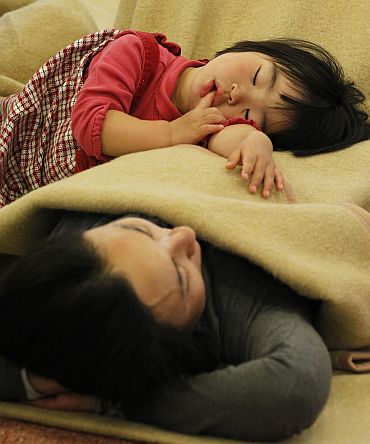
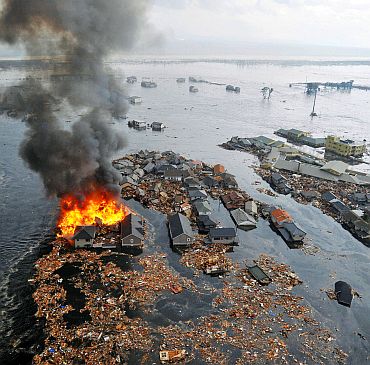
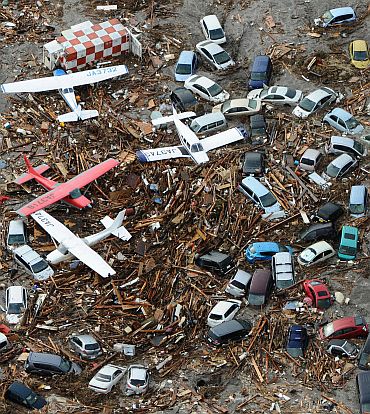

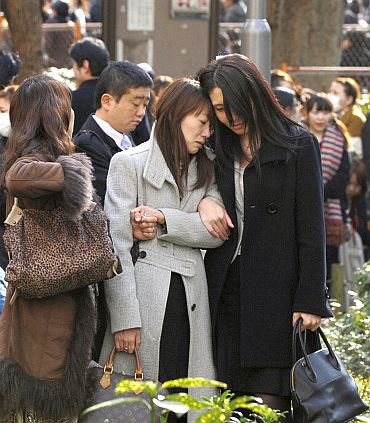
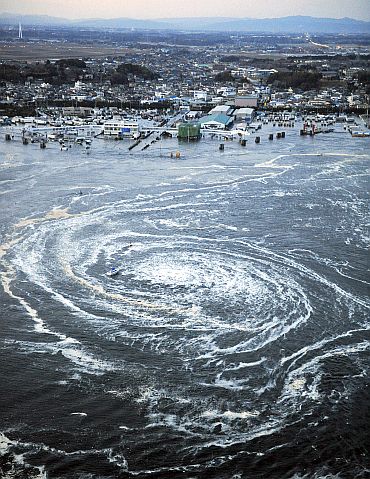
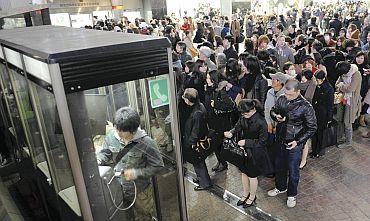
article